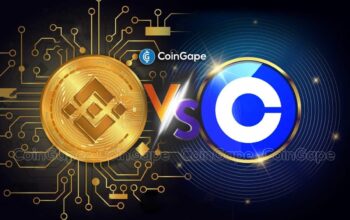Introduction
The advent of blockchain technology has revolutionized the financial and technological worlds. Furthermore, the evolution led to the birth of Bitcoin and later Decentralized Finance (DeFi). DeFi’s explosive growth has created a new, blockchain-based, middle-man-free financial system. Surprising, right?
Read this blog to examine the fascinating worlds of Bitcoin and DeFi and how they influence financial technology.
Understanding Bitcoin and its Role in DeFi
Bitcoin is a digital currency that functions on a decentralized peer-to-peer network. It was created in 2009 by an unnamed person or group of people using the alias Satoshi Nakamoto. The blockchain, a decentralized ledger that securely and publicly records all transactions, underlies Bitcoin.
Bitcoin is fundamental to the DeFi ecosystem because it offers a secure, decentralized means of value storage and transfer. Several platforms have enabled users to access financial services. Exchange their bitcoins for other assets, and earn interest on their holdings due to bitcoin’s expanding acceptance in DeFi.
Decentralized Finance Ecosystem
DeFi is a new financial system that operates on the blockchain, allowing users to access various financial services without intermediaries. DeFi operates on smart contracts, self-executing contracts that enforce the terms of an agreement automatically. These contracts can create various financial products, including loans, insurance, and savings accounts.
The Key components of the DeFi Ecosystem
Here is the primary aspects of the DeFi ecosystem:
- Yield Farming: Maximizing Returns in DeFi: Yield farming is a popular way of earning interest on your digital assets in the DeFi ecosystem. It involves depositing your assets into a liquidity pool and earning rewards for providing liquidity. The rewards can be in the form of the underlying asset or a governance token associated with the protocol. Yield farming is a relatively new concept, and many protocols offer different reward structures and strategies. Understanding the risks involved in yield farming and carefully considering the potential rewards before depositing your assets into a liquidity pool is important.
- Stablecoins: The Stabilizing Force in DeFi: Stablecoins are digital currencies pegged to the value of a real-world asset, such as the US dollar. They provide stability in the Decentralized Finance ecosystem and allow users to avoid the volatility associated with other cryptocurrencies.
Stablecoins are used as a medium of exchange, a store of value, and a unit of account in the DeFi ecosystem. Also, they are used as collateral in lending and borrowing platforms, allowing users to access financial services without intermediaries. - Decentralized Exchanges (DEXs): Decentralized exchanges (DEXs) operate on the blockchain and allow users to trade digital assets without intermediaries. DEXs use smart contracts for support to operate on a peer-to-peer basis, allowing users to trade directly with each other.
The main advantage of DEXs is that they give users greater control over their assets and reduce the risk of centralization. However, DEXs are still in their early stages and may not yet offer the same level of liquidity and stability as centralized exchanges. - Non-fungible Tokens (NFTs) in DeFi: Non-fungible tokens (NFTs) are unique digital assets representing ownership of a specific item or piece of content, such as a piece of artwork or a collectible. DeFi ecosystem utilizes NFTs to tokenize real-world assets, allowing them to trade on the blockchain.
- Crypto Loans and Lending Platforms: Crypto loans and defi lending platforms are key components of the DeFi ecosystem. They allow users to access loans using their digital assets as collateral. These platforms operate on the blockchain, allowing users to access loans without intermediaries.
Furthermore, crypto lending platforms provide borrowers with access to liquidity, while lenders can earn interest on their digital assets. The terms of the loan, including the interest rate and duration, are determined by the smart contract and can be customized to meet the needs of both parties.
Benefits of DeFi
The DeFi ecosystem provides a range of benefits to users, including:
- Access to Financial Services: DeFi allows users to access various financial services, including loans, savings accounts, and insurance, without intermediaries.
- Decentralization: DeFi operates on the blockchain, giving users greater control over their assets and reducing the risk of centralization.
- Transparency: DeFi operates on smart contracts, which are transparent and publicly accessible. This provides users with a clear understanding of the terms and conditions of financial transactions.
- Security: DeFi operates on the blockchain, providing a secure and decentralized way to store and transfer assets.
The Bottom Line
The world of Bitcoin and DeFi is rapidly evolving, changing how we think about finance. DeFi provides a new financial system that operates on the blockchain, allowing users to access various financial services without intermediaries.
While many challenges are to be addressed in the DeFi ecosystem, the potential benefits are enormous. As the ecosystem continues to evolve, it is likely that we will see a new financial system emerge that is more transparent, secure, and accessible to all.
In conclusion, if you are looking for a new way to manage your finances, try the exciting world of Bitcoin and DeFi. The blockchain-based ecosystem of decentralized finance, smart contracts, yield farming, and stablecoins is sure to revolutionize the future of open finance.







